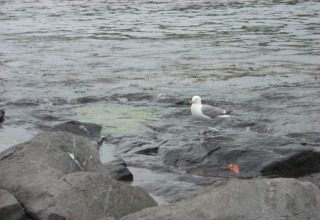
There is an essay from the Sloan Management Review that makes use of this first definition of generativity. Jeanne Liedrka and her colleague (Liedrka, et al., 1997) are interested in the “generative cycle” used by knowledge-based organizations, which are often professional firms. The authors identify this cycle as consisting of collaborative learning among employees in an agency and the clients that they serve. They see business development and individual professional development as being intimately linked. For this collaborative work to be successful, an agency must hire and retain people who have analytic talent to do technical work, relationship skills to build and sustain the collaboration through a combination of interpersonal skills and personal qualities of integrity and respect, and entrepreneurial instincts to drive the business development and organization-building work.
We believe the ingredients which are required to create a generativity cycle are also perquisites for a person to be successful in the role of Generativity Two. In building the competencies and confidence of those with whom a leader is working, it is essential that many things be known in-depth about the system in which the leader and his or her colleagues operate. That requires experience in this system and a deep understanding of how it actually operates.
Leaders also must be able to build a strong collaborative relationship with their co-workers. This requires the relational skills identified by Liedrka—a combination of interpersonal skills (emotional IQ), personal integrity, and respect (appreciation) for these colleagues. Finally, the leader needs to be driven to achieve success for the organization, and not just for themselves. The entrepreneurial instinct identified by Lierka seems to be right on target.
All of this suggests that the ingredients which are to be found in the creation and maintenance of an organization’s generative cycle parallel and overlap with the ingredients needed for success in Generativity Two. That is, creativity and innovation exist side-by-side with Eriksonian generativity. Or as Everett Rogers (1962) once observed, the process of innovation diffusion starts with creativity and innovation and then disperses to various constituencies in an organization. This diffusion requires analytic skills, relationship skills, and an entrepreneurial instinct —as we will see later in this essay. All of this is important to keep in mind when serving as an organizational consultant. We are encouraging creativity and innovation when we help an organization foster Generativity Two through its mentoring program–or a related program involving one of the other M’s that we identify later in this essay.
Generativity as Source of Energy
The second use of the term “generativity” is an off-shoot of the more commonly used word, “generator” – a device that produces energy by converting it from one form (such as natural gas, propane or water) to another form (often electricity). Used in this way, “generative” refers to the capacity of any device to perform this function and is directly aligned with Eriksonian generativity. Just as a generative leader can produce, enhance or at least encourage creativity and innovation, so the generative leader can transform organizational energy from conception to action and from dream to reality. This is another important insight for all organizational consultant to keep in mind and for an organizational coach to share with their executive client: coaching can help move ideas to action.
Download Article













